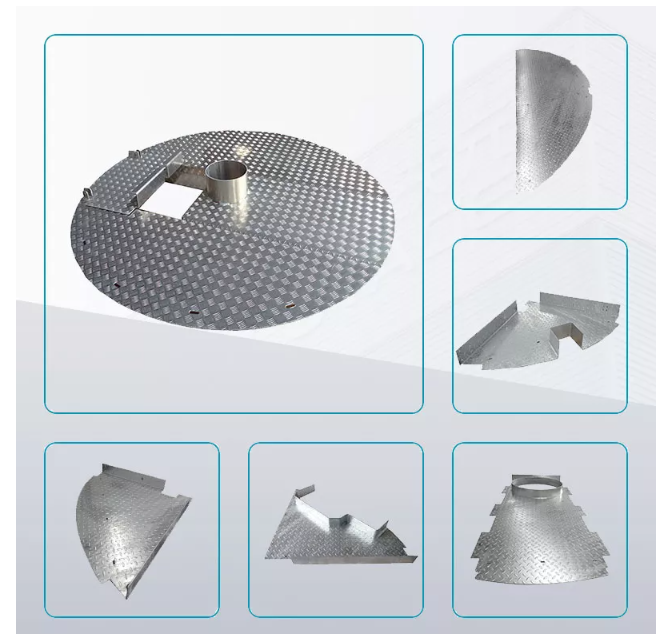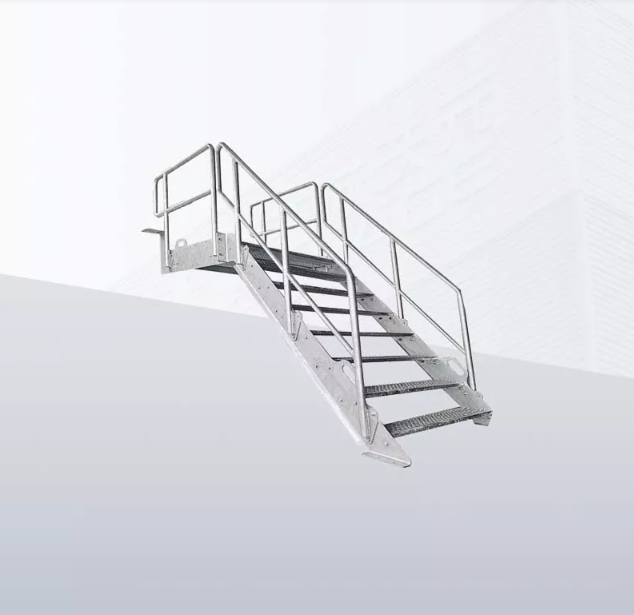- All
- Product Name
- Product Keyword
- Product Model
- Product Summary
- Product Description
- Multi Field Search
Views: 0 Author: Site Editor Publish Time: 2025-07-23 Origin: Site











Carbon steel towers are strong, durable structures made from carbon steel, ideal for applications like telecommunications, electrical transmission, and wind energy due to their ability to support heavy loads and withstand extreme conditions. Their high tensile strength and affordability make them a popular choice for heavy-duty performance. Mechanical internals in these towers, such as reinforcement components and mounting systems, are crucial for ensuring the tower can handle structural and dynamic loads, like wind or seismic activity. These internals help distribute stress, protect equipment, and improve the tower’s reliability and longevity in demanding conditions.

Carbon steel is an exceptional material for towers that must bear substantial weight and resist external pressures. Its tensile strength ensures that the tower can support the heaviest equipment without bending or collapsing. Unlike some other materials, carbon steel maintains its strength under extreme conditions, ensuring that the tower stays upright and functional even during severe weather or seismic events. Towers made from carbon steel are designed to endure these forces over the long term, making them a reliable choice for industries where stability is non-negotiable.
Although carbon steel can corrode over time, it is highly effective when protected with coatings like galvanization or rust-resistant paints. These protective coatings prevent corrosion from weakening the tower’s structure, especially in coastal or industrial areas with high moisture and salt exposure. Carbon steel’s corrosion resistance makes it an ideal choice for applications in harsh environments, as the material can last many years before requiring significant repairs. With the right maintenance procedures, carbon steel towers maintain their integrity for decades.
Compared to materials like stainless steel or aluminum, carbon steel is much more affordable, making it a cost-effective solution for large-scale infrastructure projects. The combination of strength, affordability, and durability makes carbon steel an appealing option for industries that require substantial load-bearing structures but are constrained by budgetary concerns. Additionally, since carbon steel towers often require less maintenance than other materials, the long-term savings are significant, further enhancing their cost-effectiveness.
Carbon steel towers provide the necessary structural integrity to support telecommunication equipment such as antennas, satellite dishes, and signal receivers. These towers must be robust enough to handle the weight of heavy equipment while being exposed to various environmental conditions. Carbon steel’s strength and reliability make it a go-to material for telecommunications towers, ensuring that signals can be transmitted effectively without interruptions due to tower failures.
In the electrical transmission industry, carbon steel towers are used to support high-voltage transmission lines. The strength of carbon steel enables the towers to carry the immense loads of high-voltage lines, ensuring that electricity can be transmitted over long distances with minimal risk of structural failure. These towers also need to withstand external stresses such as wind, seismic forces, and temperature variations, all of which carbon steel is well-equipped to handle.
Wind turbine towers, which must support heavy turbine blades and withstand significant wind forces, benefit greatly from carbon steel’s strength. The towers must endure constant exposure to the elements, including high winds, UV rays, and moisture, which makes the material’s durability and resistance to wear crucial. Carbon steel wind turbine towers ensure the structure remains secure, reducing maintenance needs and increasing the lifespan of wind farms.

Mechanical internals are the internal components that help the tower function effectively. These components provide structural support, distribute loads, and protect sensitive equipment. They include reinforcement elements like braces and support beams, mounting systems for antennas or communication devices, cable management solutions, and electrical junction boxes. The mechanical internals of a tower are responsible for maintaining the stability of the structure while ensuring that the tower can handle both the static and dynamic loads it faces over time.
The reinforcement structures inside carbon steel towers consist of additional braces, beams, and crossbars. These components are designed to distribute the load across the tower more evenly, preventing localized stress that could lead to structural failure. They are essential for ensuring that the tower remains strong even when exposed to high winds or the weight of heavy equipment.
Mounting brackets and support frames are used to secure equipment like antennas, communication devices, and power lines. These components ensure that the equipment remains stable, even under challenging conditions such as high winds or seismic activity. The strength of these internal parts is vital for keeping sensitive equipment safe and functional, as they minimize vibration and movement.
In telecommunications or power grid towers, cable management systems are crucial for organizing and protecting cables. Mechanical internals include cable trays, conduits, and strain relief systems, which prevent the cables from tangling, wearing out, or getting damaged. These systems also help manage the weight of the cables, reducing stress on the tower and its components.
Junction boxes house electrical connections and power distributors within the tower. They help ensure that the power needed for the equipment on the tower is properly managed. These internal components are protected from the elements, and they ensure that electrical connections remain secure over time, even in extreme conditions.
Mechanical internals significantly improve the load-bearing capacity of carbon steel towers. By using reinforcement structures, mechanical internals help distribute the load across the entire tower, preventing certain parts of the structure from bearing too much weight. This even distribution of stress ensures that the tower can handle even the heaviest equipment or external forces without failure.
Mechanical internals play a critical role in protecting sensitive equipment from damage. Mounting brackets, for example, secure antennas and communication devices, preventing vibration or movement that could cause wear. Additionally, cable management systems ensure that cables are properly routed and protected, reducing the risk of damage from external factors like wind or water.
Carbon steel towers are susceptible to corrosion, but mechanical internals help prevent this issue by incorporating protective coatings and corrosion-resistant materials in the internal components. Regular maintenance and inspection of these internals are essential to prevent damage and extend the tower’s lifespan. For example, replacing worn-out internal parts and reapplying protective coatings can prolong the life of the tower and ensure reliable performance for many years.
Mechanical internals are particularly important for towers in high-traffic or high-stress areas. For example, wind turbines and electrical transmission towers are subjected to constant loads and harsh environmental conditions. Internal components such as reinforcements and support systems are designed to absorb and distribute these forces, ensuring that the tower remains stable and functional over its service life.
Designing carbon steel towers to handle heavy-duty tasks requires careful consideration of multiple factors. Engineers must balance the strength of the structure with its weight, ensuring that it can support the necessary equipment without being overly cumbersome. They must also take into account environmental factors like wind, seismic activity, and temperature changes, all of which can affect the performance of the tower.
Engineers use advanced design tools like finite element analysis (FEA) to simulate how the tower and its mechanical internals will behave under different stresses. This allows them to optimize the design for maximum strength and efficiency. Additionally, using reinforced materials for mechanical internals ensures that these components can handle the heavy-duty requirements without adding unnecessary weight to the overall structure.
Mechanical internals contribute to the overall cost-effectiveness of carbon steel towers. By improving load distribution and protecting sensitive equipment, these internals reduce the need for frequent maintenance and replacements, making the tower more cost-efficient in the long run.
Mechanical internals improve the tower's reliability by ensuring it can handle heavy loads and external pressures. This results in fewer instances of tower failure and reduced risks to public safety, especially in high-traffic areas or where large amounts of equipment are mounted.
Carbon steel is recyclable, making it an environmentally friendly choice for tower construction. Additionally, using mechanical internals that protect sensitive equipment and improve the durability of the tower reduces the need for replacement, contributing to the sustainability of the infrastructure.
The future of carbon steel towers lies in the continued development of smarter mechanical internals, such as sensors that can detect structural weaknesses before they become a problem. This would allow for predictive maintenance and further improve the reliability of these towers in heavy-duty applications.
As environmental concerns grow, the focus on using sustainable materials and processes in the construction of carbon steel towers is increasing. In the future, there will be greater emphasis on minimizing the carbon footprint of manufacturing processes and ensuring that mechanical internals are recyclable at the end of their life cycle.
Carbon steel towers, equipped with robust mechanical internals, are essential for heavy-duty applications. Their ability to handle substantial loads, withstand harsh environments, and provide reliable support makes them ideal for industries such as telecommunications, electrical transmission, and wind energy.
The future of carbon steel towers is bright, with innovations in design and sustainability that will enhance their strength, durability, and cost-effectiveness even further.
A: Carbon steel is known for its high strength, durability, and cost-effectiveness, making it ideal for supporting heavy loads and enduring extreme conditions over the long term.
A: Mechanical internals provide reinforcement, load distribution, and protection for sensitive equipment, which ensures that the tower can operate reliably in harsh conditions.
A: Carbon steel is more affordable than alternatives like stainless steel and offers excellent strength-to-weight ratios, making it cost-effective both initially and for long-term maintenance.
A: Mechanical internals, such as reinforcement structures and mounting brackets, help the tower withstand high winds by distributing loads evenly and minimizing stress on the tower’s structure.
A: The future of carbon steel towers includes advancements in smart technology, such as sensors for predictive maintenance, and a focus on more sustainable manufacturing processes for long-lasting, eco-friendly structures.